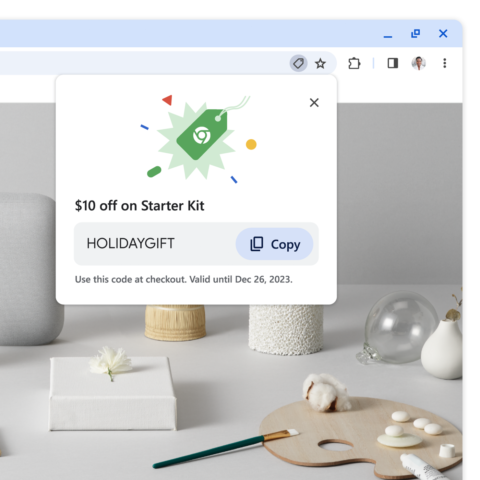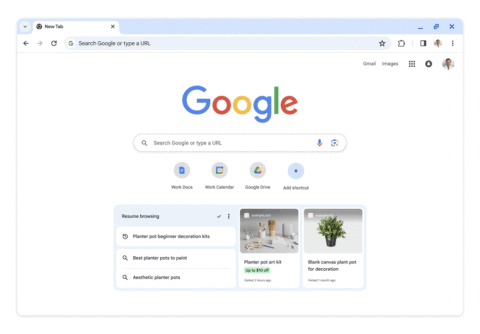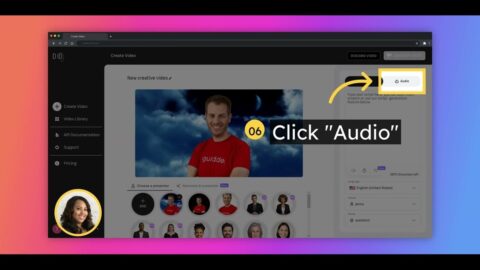The final week of ‘Jaja’s African Hair Braiding’ is live streaming Nov. 14 through 19. Here’s how to watch from home.
Every Marvel movie villain, ranked
From Thanos to Loki to Kang, Dar-Benn, and some truly disappointing “Iron Man” villains, we rank all the big bads of the Marvel Cinematic Universe… even Malekith (who??).
Get a 2021 HP Chromebook for under $150
Save on a refurbished 2021 HP Chromebook at the Mashable Shop.

TL;DR: As of Nov. 8, you can snag a reliable and refurbished 2021 HP Chromebook with 32GB eMMC and 4GB RAM for only $143.99 (reg. $249) ahead of the holidays for a limited time.
Looking for a new-to-you device to help you tackle your daily tasks that won’t cost an arm and a leg? From work tasks to taking a much-needed break to stream content, a laptop is a great way to flexibly handle anything from anywhere. And thanks to refurbished electronics, you can score amazing deals on powerful portable options, like this 11.6-inch HP Chromebook.
This refurbished 2019 11.6-inch HP Chromebook laptop is ready to be your reliable go-to device. And it’s currently available at a seriously big price drop — just $143.99, $105 off the usual refurbished price — for a limited time.
Don’t be deceived by the low price of this HP Chromebook; this refurbished model with an 11.6-inch screen and impressive 1366 x 768 resolution is still packed with features. It’s an excellent pick for professionals and students alike, thanks to the various bells and whistles. It includes an HP quiet keyboard that helps prevent annoying keyboard clicking distractions and a touchpad with multi-gesture support and easy navigation.
Multitask away thanks to 4GB of RAM that allows you to smoothly run multiple apps and browser tabs at once. And 32GB of hard disk size will enable you to save your most important files right on your device, and you can take advantage of the perks of Chrome OS, which can help you stay organized and focused. This particular model comes with a grade ‘B’ rating, which means you may see light scuffing on the bevel and case or light scratches and dents on the body.
Bring home a refurbished HP Chromebook for just $143.99 (reg. $249) — for yourself or a loved one — for a limited time.
Prices subject to change.

Opens in a new window
Refurbished HP Chromebook 11MK G9EE (MediaTek MT8183, 4GB RAM, 32GB eMMC)
Google launches new tools to find and track shopping deals
Google is rolling out a number of new shopping features built directly into Search and Chrome for deal hunters.

The holidays are here again and for some that means its time to search out the best shopping deals.
With Black Friday just around the corner, Google has stepped in and launched a few new tools to help you with your deal hunting endeavors.
According to an announcement post on Google’s blog, the company has rolled out a slew of new features to help users find and track deals when shopping online.

Credit: Google
First, Google has rolled out a new deals destination page right on its main search platform. Simply search “shop deals” and users will be taken to a shopping page full of discounts organized via scrollable product categories. If a user knows what they’re looking for, they can just type in the specific product alongside the “shop deals” search query and be taken directly to that Google deals page for the item.

Credit: Google
Next up, Google has launched a few new shopping features specifically for Google’s Chrome web browser. When a user opens a new tab, the default page will provide the user with the latest deals and discounts for the previous product they were searching for.

Credit: Google
Google is also bringing its price history and tracking tool to Chrome. When a user is shopping for a product that Google has price history for, Chrome will notify the user in the address bar. The user can then open a sidebar within Chrome that will provide information about what the product normally sells for and a 90-day price history graph.

Credit: Google
In addition to that, the Chrome web browser will also monitor price changes and coupons and inform users via notification in the browser’s address bar. Users can also opt to be regularly notified for specific products and even receive email notifications when an item drops in price.
For the deal-obsessed, many of these features might seem familiar. Services like PayPal’s Honey have provided price tracking and coupon notifications for some time now, so Google isn’t exactly inventing the wheel. However, Google has a lot of users and if those users can just easily do all the price tracking and coupon clipping natively on Google Search or in Chrome without the need for extensions, many of them will likely opt for that.
But that’s up to the big tech companies to duke it out. For users, a deal is a deal regardless of who tells them about it.
Google Search and Chrome are getting new tools to help users find discounts
Google is coming for Honey and other deal-finding tools by introducing new features on Search and Chrome to help users find discounts. The tech giant announced on Tuesday […]
YouTube users avoiding ad-block rules with these alternatives
Amid a new push from YouTube to get users off of ad-blocking apps, folks are desperately searching for working alternatives.

People will do anything to not have to give money to YouTube.
Over the last few months, some YouTube users have noticed a new popup message warning them to turn off their installed ad-blocking apps in order to continue watching videos on the service. Now, according to a report from Wired, popular ad-blocking apps like Ghostery and AdGuard are seeing record numbers of uninstallations, with users largely citing the YouTube rules as a reason for it.
However, that doesn’t mean those users are just accepting YouTube’s copious advertisements or paying for YouTube Premium ($13.99/mo) to get rid of them the preferred way. Instead, as Android Authority noted and as you can easily find on Reddit, people are frantically searching for working alternatives.
Unfortunately, there doesn’t seem to be a free alternative that’s guaranteed to work perfectly on an indefinite basis right now.
-
One popular browser extension called uBlock Origin seems to be the easiest and best bet right now, with users claiming it works best on Firefox (though it’s worked for me on Chrome, too).
-
AdGuard‘s paid tier also seems to work, per Android Authority.
Some folks are switching browsers to Firefox or even Microsoft Edge just to find a way to watch YouTube videos in peace.
The problem with this is that YouTube will almost certainly weed out working alternatives over time, so some degree of adaptability may be required here on the user end. Or, you could just give in and pay for YouTube Premium. It’s not fun or ideal, but you can at least guarantee it’ll work.
Twitter users still resisting X name change months later
Months after Elon Musk changed Twitter’s name to X, users fight to change the name back. Stephen King is speaking out. Now what?

It’s three months since the official change, and reports of the death of Twitter — as a name, that is — have been greatly exaggerated.
“This X shit’s got to go,” author Stephen King tweeted Thursday. That post received 71,000 likes by the end of the day. Elon Musk, creator of “this X shit,” responded to King with a “XX” and a winking-kiss emoji. Musk’s reply had a relatively tiny 7,300 likes at time of writing, despite the fact that Musk has 150 million more followers than King.
It was another humiliation for Musk, who has frequently tried to bring King, one of his favorite writers, on board with his controversial plans for the service. But it was also a crucial temperature-taking of the Twitter community. “Everyone literally still just calls it Twitter,” said one of the most popular replies. “I cannot explain to my friends what X is,” said another.
These are no mere anecdotes. A Harris Poll/Ad Age survey in mid-September found that some 69% of U.S. adults still refer to the platform as Twitter. A Chrome extension that scrubs all mentions of X from Twitter.com has more than 100,000 users. All of which raises an interesting question: If Elon Musk is trying to make fetch happen, and fetch doesn’t seem to be happening, and a significant chunk of his users say that fetch is never, ever going to happen … what happens next?
Musk owns the service, of course, and can call it whatever he likes. The company providing the service is legally known as X Corp. But the English language is a democracy, and if most of us are still calling the service Twitter, then Twitter it is. English itself is on the side of the 69% — or, to give them a more appropriate name, the Twitter resistance.
Musk is, as in many things, his own worst enemy here. The slapdash nature of the name-change rollout means that uses of “Twitter” and “tweets” are still all over the website, the app, the email communications. Most representations are beyond his control. The bird logo is embedded so many places on the internet and IRL, scrubbing it out would take years of work by more employees than … well, than Musk has already fired.
Ironically, given Musk’s propensity for media bashing, the media may be his biggest ally in making X happen. Some outlets such as Wired have changed their style guide to call Twitter X. Others use the “X, formerly Twitter” construction. If enough people over enough time read enough news about Twitter that calls the service X, and it rubs off on them, then you may not have to explain to your friends what X is anymore. The linguistic vote would start to tilt in Musk’s favor.
Twitter vs. X, round 1
Let’s recap, because you may still have a hard time believing that “this X shit” even happened. Reality sounds like a bad movie pitch: World’s richest man, having massively overpaid for one of the most beloved brands on the internet, kills it. World’s richest man has long been obsessed with the letter X, ignoring everyone who has tried to tell him how shady it sounds.
To drive the point home, this guy also thinks it looks cool to stick a massive “X” on the roof of the beloved brand’s office building (whose owner, by the by, says the world’s richest man has been stiffing him on the rent). It’s a brutal-looking X made out of lights so bright it blinds tenants in the apartments opposite.
At this point, a seasoned Hollywood executive might look incredulous. C’mon, this is like Biff Tannen from Back to the Future meets Mr. Potter from It’s a Wonderful Life! You’re making it too obvious what will happen next: some plucky group of underdogs restores the brand, because he can’t actually force people to use his name! No one is that much of a cartoon villain, surely?
Musk, by accident or design, was determined to make himself seem like a supervillain: “X Luthor,” as more than one Twitter user dubbed him at the time of the name change. Lex Luthor actor Jon Cryer tweeted about the similarity of X corp to that of the fictional LexCorp.
It was almost as if he was begging for a resistance movement to rise against him, as they so often do on Twitter. After all, Musk had handed his foes a perfect ready-made symbol — a bird, just like the Mockingjay worn by Katniss Everdeen in the Hunger Games series. “The bird is freed,” Musk tweeted when he took over a year ago; a Twitter resistance could use that very slogan.
Would the bird logo catch on? Would Twitter’s millions of users protest the change by switching their avatar to the bird? Would they go dark, like Reddit during a summer of protest, and only log on the bare minimum of times necessary to stop Musk seizing their accounts (which is, apparently, once every several years)?
And a King shall lead them
Well, no, not exactly. Twitter has certainly seen a decline in its daily active users, but what is remarkable is that it hasn’t declined further. More than 200 million people still use the service daily. A majority still call it Twitter, sure; they tweet (rather than post) jokes and memes about Musk’s weird X obsession and dead birds in cages. But they’ve also blithely accepted all the X imagery creeping in around the edges — the horrible faux-marble app icon, the design-school-reject logo — because what can you do, right? Just try not to pay attention to it!
Which is why King’s sudden intercession is so interesting. It’s not that the author was previously unaware of the “X shit”; he still posts very frequently, like many a Musk opponent who once claimed they would quit the service. In fact, he’s not going anywhere. King is taking a stand, pun very much intended, and he may well be the right leader for the moment. He’s folksy. His work is extremely popular in middle America and around the world, including with Musk and friends.
Why now? No reason necessary. We all get it, that moment when you’ve just had enough and vow that an intolerable thing cannot go on (certainly, this has happened to more than a few of King’s characters). The fact that the moment has come three months in makes it that much worse for Musk. King cannot be accused of rushing to judgment.
Whether King continues the charge against X, and whether other high-profile users will join him, remains to be seen. But by calling it out as he sees it, he’s already given the nascent Twitter resistance a powerful weapon in their fight for the old brand. Advertisers, always wary of a New Coke situation, may run away even faster from a service described by the world’s favorite horror writer as “X shit.”
Your move, X Luthor.
Google Chrome on iPhone now lets you move the address bar
Google Chrome users can now move the address bar to the bottom, but only iPhone users can take advantage of this new feature.

Google added a new feature to Chrome that is reminiscent of Safari’s current design. You can now move the address bar to the bottom of the screen.
This means you no longer have to stretch your thumbs to reach the top of your phone in a way that interrupts your typing flow. Sorry, Android users — this feature is only available to iPhone users at this time.

Credit: Google
Why move the address bar to the bottom?
Phones are gigantic these days. Hell, the Samsung Galaxy S23 Ultra and the iPhone 15 Pro Max have nearly seven-inch displays — they’re practically tablets.

Credit: Stan Schroeder / Mashable
As such, the top of the screen is becoming harder for our thumbs to reach. So Google is allowing users to move the address bar to a more convenient position.
“We know people prefer different address bar positions depending on the size of their hands and devices, and we took those preferences into account when building this highly requested feature,” said Nick Kim Sexton, Google product manager for Chrome.
If you prefer the address bar on top, don’t worry: You can simply leave it in its default position.
How to move the address bar to the bottom
To move the address bar to the bottom, you must press and hold it. Next, select the “Move address bar to bottom” option. That’s it!
You can also go to Settings, tap on “Address bar,” and choose your preferred position.

Opens in a new window
Best job application deal: Lifetime license to LazyApply for $60
Save on a lifetime subscription to LazyApply Job Application at the Mashable Shop.

TL;DR: An exclusively low price on a basic lifetime license to LazyApply Job Application is available through Nov. 9. Grab this Chrome plug-in ahead of the holidays for just $60 (reg.$149) and make applying to jobs easier.
Just the thought of having to look for and apply for a job can make the average person tense up and stress out. And it’s really not surprising, as it’s an unpleasant thing to have to do for many reasons. Not the least because it takes a lot of time and effort.
But there are ways to make that part easier. LazyApply was made to cut that down to a more manageable time. With this Chrome plug-in, you’ll be able to submit applications on multiple platforms — up to 1,000 — like Indeed and LinkedIn with one easy click. And it’s available for the exclusive price of just $59.97 (reg. $149) until November 9.
No more spending hours filling out the same information on multiple job portals. You get lifetime access to the basic edition and 150 applications per day. It includes JobGPT, which uses AI to fill in your information using advanced algorithms to avoid blocks to make things even faster.
You can also analyze your application performance daily, get one weekly consultation, tips on CV improvement, and more to make the job search process a little easier on the soul.
You do need a Google Chrome OS to use LazyApply. This offer is available on one device but includes lifetime access, and updates are included.
This job-search solution helps simplify and streamline the application process by automating the tedious parts of job hunting. It may even help combat the job-search anxiety many of us experience.
Get a basic lifetime license to LazyApply Job Application while it’s on sale for the exclusive price of $59.97 (reg. $149) until November 9 at 11:59 p.m. PT.
Prices subject to change.

Opens in a new window
Guidde’s AI automatically generates software documentation videos
Organizations today rely on a growing number of apps to get work done. According to Statista, in 2022, companies were licensing an average of 130 software-as-a-service (SaaS) apps, […]









